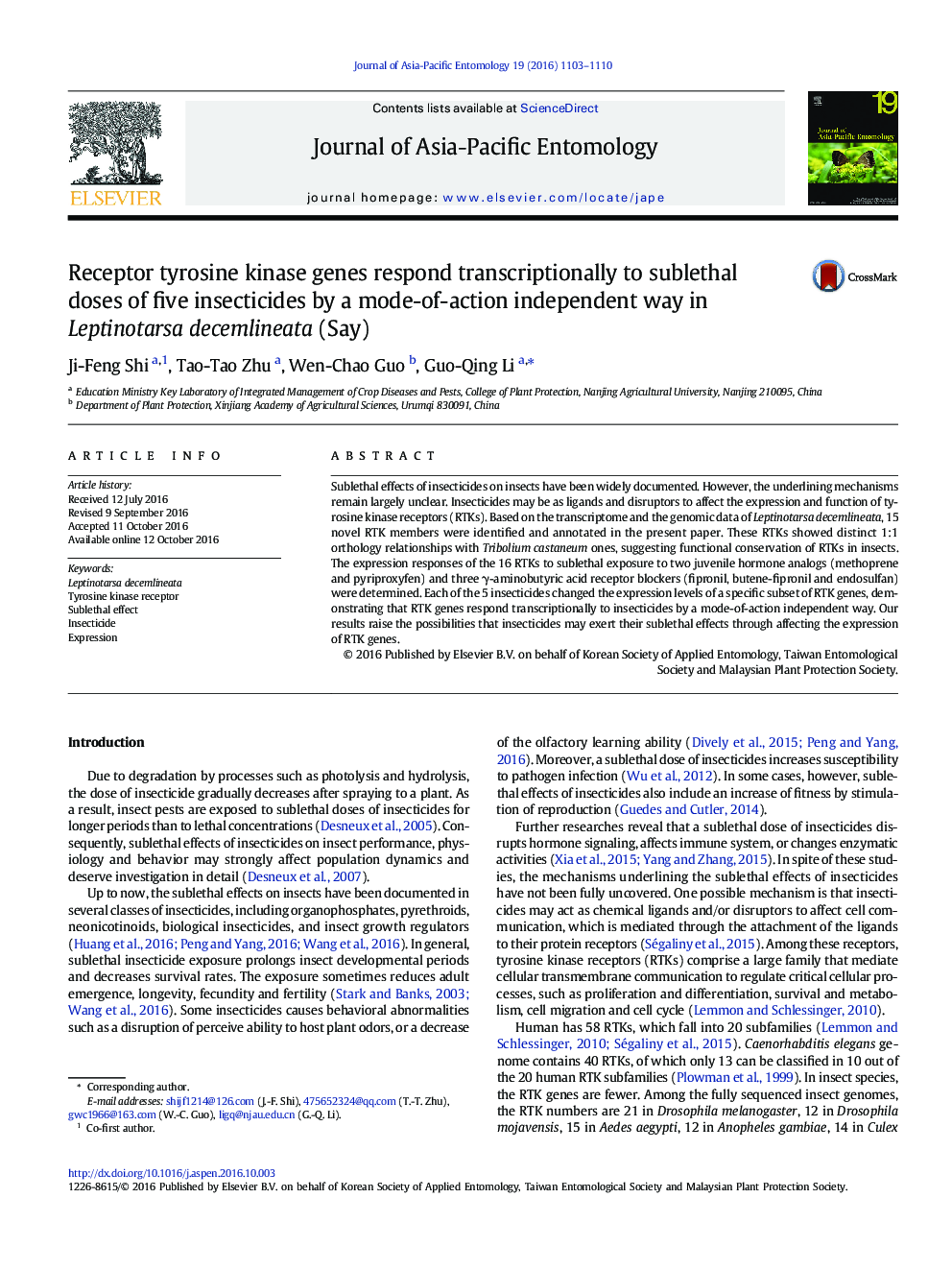| Article ID | Journal | Published Year | Pages | File Type |
|---|---|---|---|---|
| 4524362 | Journal of Asia-Pacific Entomology | 2016 | 8 Pages |
•A total of 16 tyrosine kinase receptor (RTK) genes were identified.•Each of the five insecticides changed the expression of a specific subset of RTK genes.•RTK genes respond transcriptionally to insecticides by a mode-of-action independent way.
Sublethal effects of insecticides on insects have been widely documented. However, the underlining mechanisms remain largely unclear. Insecticides may be as ligands and disruptors to affect the expression and function of tyrosine kinase receptors (RTKs). Based on the transcriptome and the genomic data of Leptinotarsa decemlineata, 15 novel RTK members were identified and annotated in the present paper. These RTKs showed distinct 1:1 orthology relationships with Tribolium castaneum ones, suggesting functional conservation of RTKs in insects. The expression responses of the 16 RTKs to sublethal exposure to two juvenile hormone analogs (methoprene and pyriproxyfen) and three γ-aminobutyric acid receptor blockers (fipronil, butene-fipronil and endosulfan) were determined. Each of the 5 insecticides changed the expression levels of a specific subset of RTK genes, demonstrating that RTK genes respond transcriptionally to insecticides by a mode-of-action independent way. Our results raise the possibilities that insecticides may exert their sublethal effects through affecting the expression of RTK genes.
Graphical abstractFigure optionsDownload full-size imageDownload as PowerPoint slide
